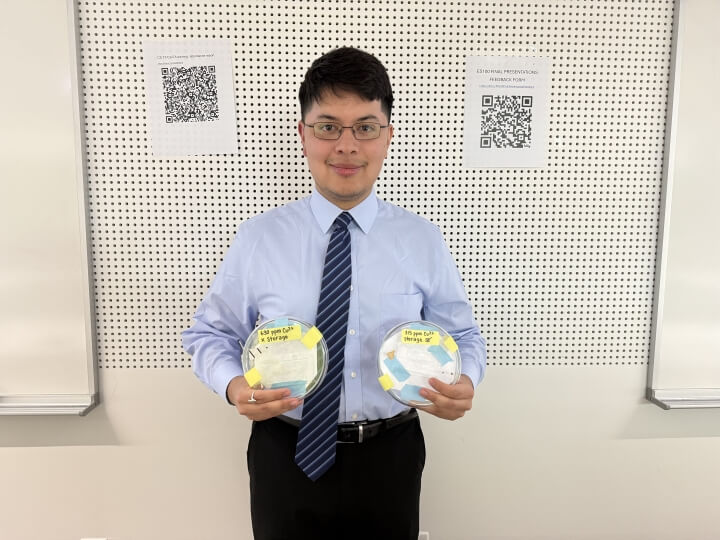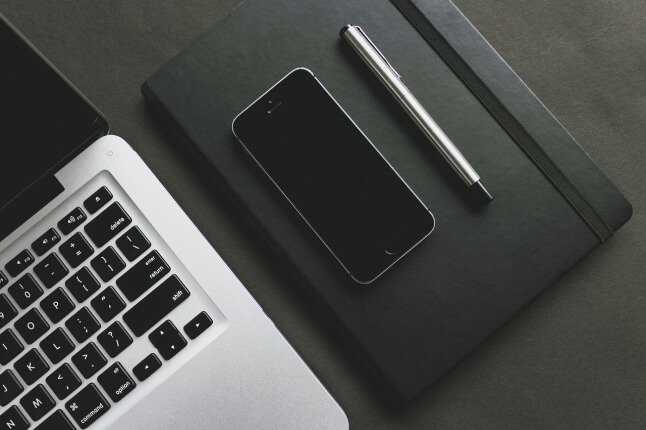News
For his senior capstone project, Agustín León Sáenz developed a low-cost way to detect copper in drinking water (Matt Goisman/SEAS)
Engineering Design Projects (ES 100), the capstone course at the Harvard John A. Paulson School of Engineering and Applied Sciences (SEAS), challenges seniors to engineer a creative solution to a real-world problem.
Microfluidic Device for Heavy Metal Detection in Water
Agustín León Sáenz, S.B. ‘25, Environmental Science and Engineering
Advisor: Melissa Hancock, Nicholas LoRusso and Avery Normandin
• Please give a brief summary of your project.
In the Amazonian province of Napo in Ecuador, illegal gold mining operations have contaminated local drinking water sources with heavy metals for over two decades. Rural Indigenous families lacking access to clean drinking water and heavy metal detection methods are the most at-risk population in the regional water contamination crisis. This project uses microfluidics, which manipulates small amounts of fluids using microchannels, coupled with colorimetric detection reactions, to optimize the efficient detection of heavy metals. I designed a low-cost ($5.30 per device), portable (handheld), and rapid (under 10 seconds to signal) method for detecting copper (Cu2+) contamination utilizing ammonium hydroxide as a reagent.
• How did you come up with this idea for your final project?
I was born and raised in Ecuador until I immigrated to the U.S. at age seven. Growing up, I was constantly confronted by the water contamination crisis in my homeland. I learned never to trust tap water and only drink from bottled water, which inspired me to pursue a thesis grounded in my lived experience and memory of potable water.
• What was the timeline of your project?
I started working on my project in April 2024 and conducted a thorough literature review over the summer. In September, I identified my design goals and technical specifications. Over the fall semester, I designed many iterations and built my initial prototype. Over the spring semester, I 3D-printed my final device and performed leak testing, runtime analysis, performance under different environmental storage conditions, and calculation of the limit of detection.
• What part of the project proved the most challenging?
What I ultimately found the most difficult was creating a device that balanced meeting my affordability, portability, and quick detection design goals while minimizing the detection limit. I was re-evaluating my design as often as possible.
• What part of the project did you enjoy the most?
I am eternally grateful to the people who supported me from the first day to the last, and all the new relationships I was lucky enough to make. My Active Learning Labs advisors, Melissa Hancock, Nicholas LoRusso, and Avery Normandin, my thesis reader, Professor Joost Vlassak, and my Assistant Director of Undergraduate Studies, Professor Bryan Yoon, always pushed me to succeed academically and provided me with emotional safe spaces when I needed them, too. My ES 100 section was the best group of people I have met at Harvard.
• What did you learn, or skills did you gain, through this project?
With the help of my ALL advising team and Dr. Mohammad Souri, I am now proficient in the computer-aided design software Autodesk Fusion, physics simulation software COMSOL, and Ultraviolet-visible spectroscopy. This project also helped me gain a deeper understanding of chemical kinetics.
Topics: Academics, Environment, Environmental Science & Engineering
Cutting-edge science delivered direct to your inbox.
Join the Harvard SEAS mailing list.
Press Contact
Matt Goisman | mgoisman@g.harvard.edu



